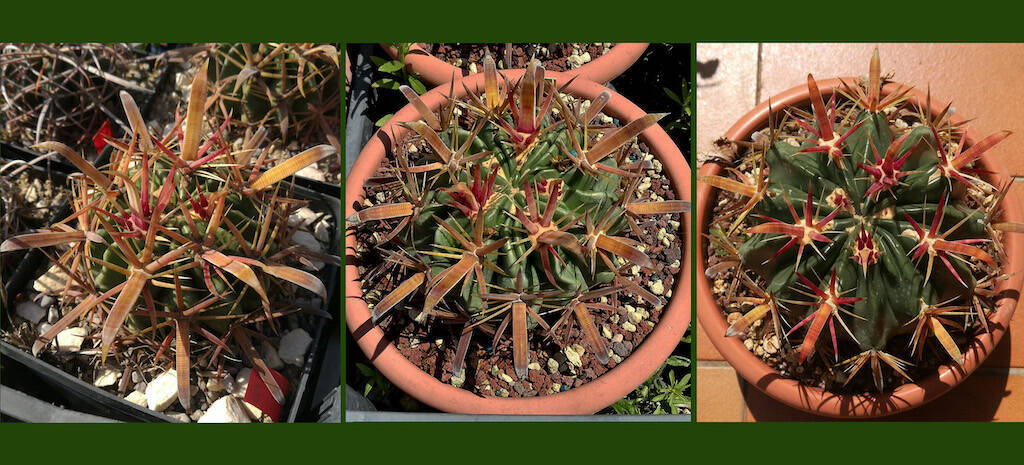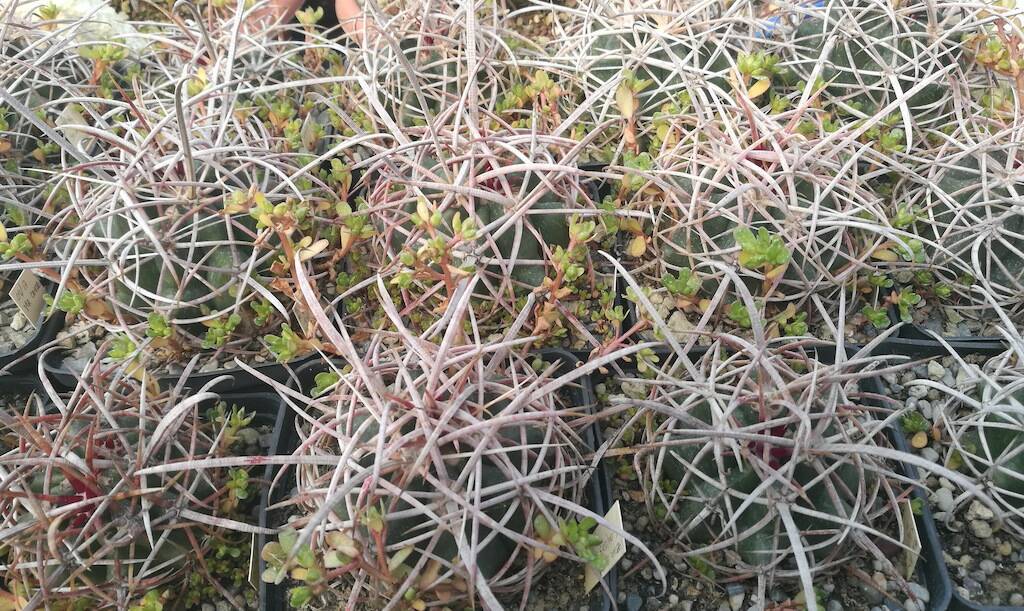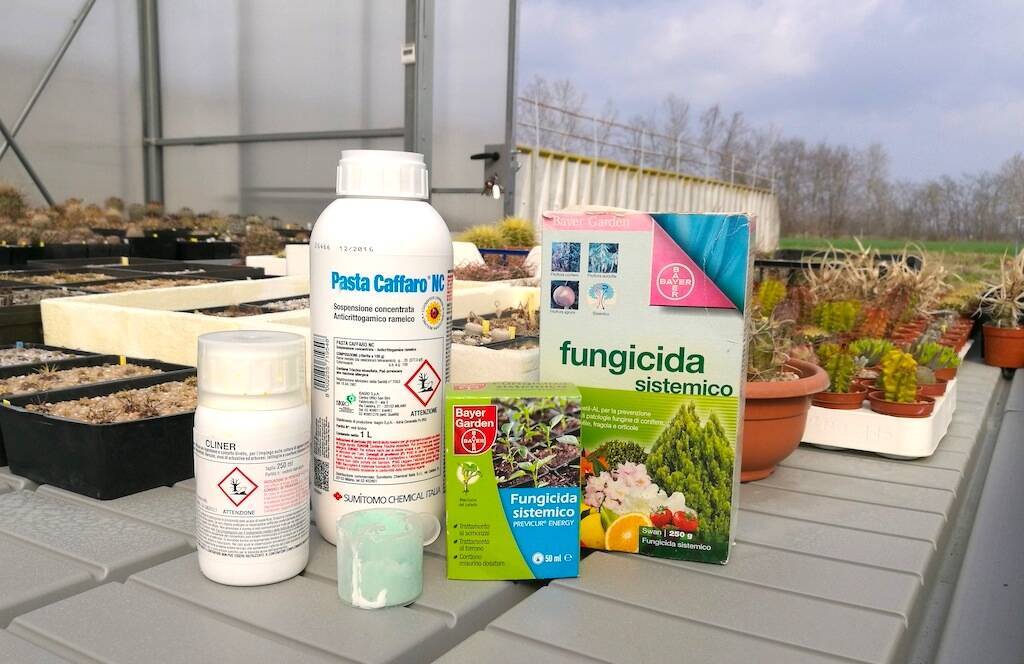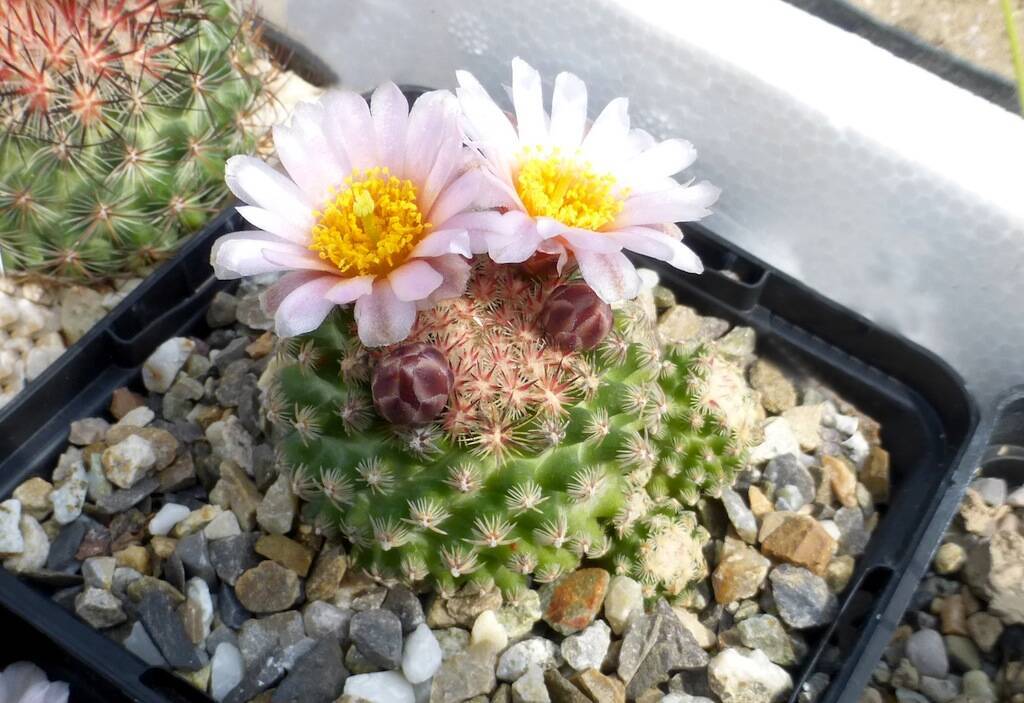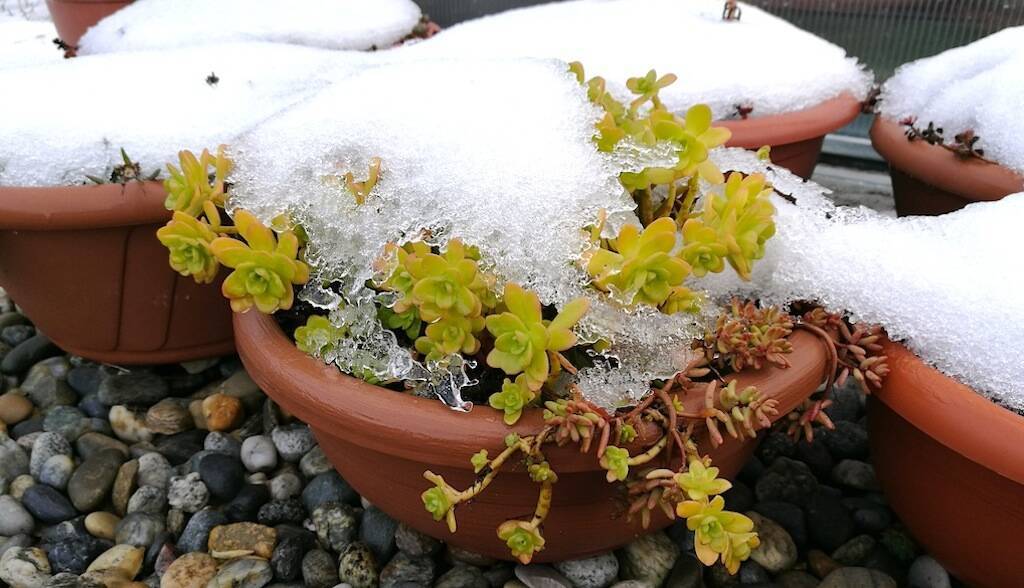When they say that a picture is better than words. In this case, there are three photos, but the concept doesn’t change, and the difference between a cactus grown in a “natural” (or “wild”) way and one with a “garden-style”, based on basic notions and beliefs is quite evident. The plants I’m writing about are Ferocactus latispinus obtained from a 2012 sowing of mine. From that same planting, I’ve got at least forty plants. Over the years, I have given away some of them, but most are still with me and are growing beautifully. It’s important to point out that these are plants born from seeds contained in a single fruit (gift of a dear friend), sown the same day and grown over the years in the same conditions, i.e. in my greenhouse, in standard soil (pumice, lapilli and peat in equal parts), watered and fertilized with the same frequency. This is to say that the starting conditions, including the genetics and the grower’s hand, are the same. And yet, as you can see from the photo above, where the three plants (three at random of the twenty-five or so that I have kept for myself) are side by side, they show remarkable differences, at least to the discerning eye and the grower with a minimum of experience.
So let’s see, in this article, how and why different cultivation regimens, assumed as a whole and not just limited to the soil, affect so much the final result and really make the difference between a cactus grown and cultivated in any garden or generic nursery and a cactus grown by an enthusiast or an expert. (…)
Per proseguire nella lettura dell'articolo Accedi o Abbonati
To continue reading the article LogIn or Subscribe


